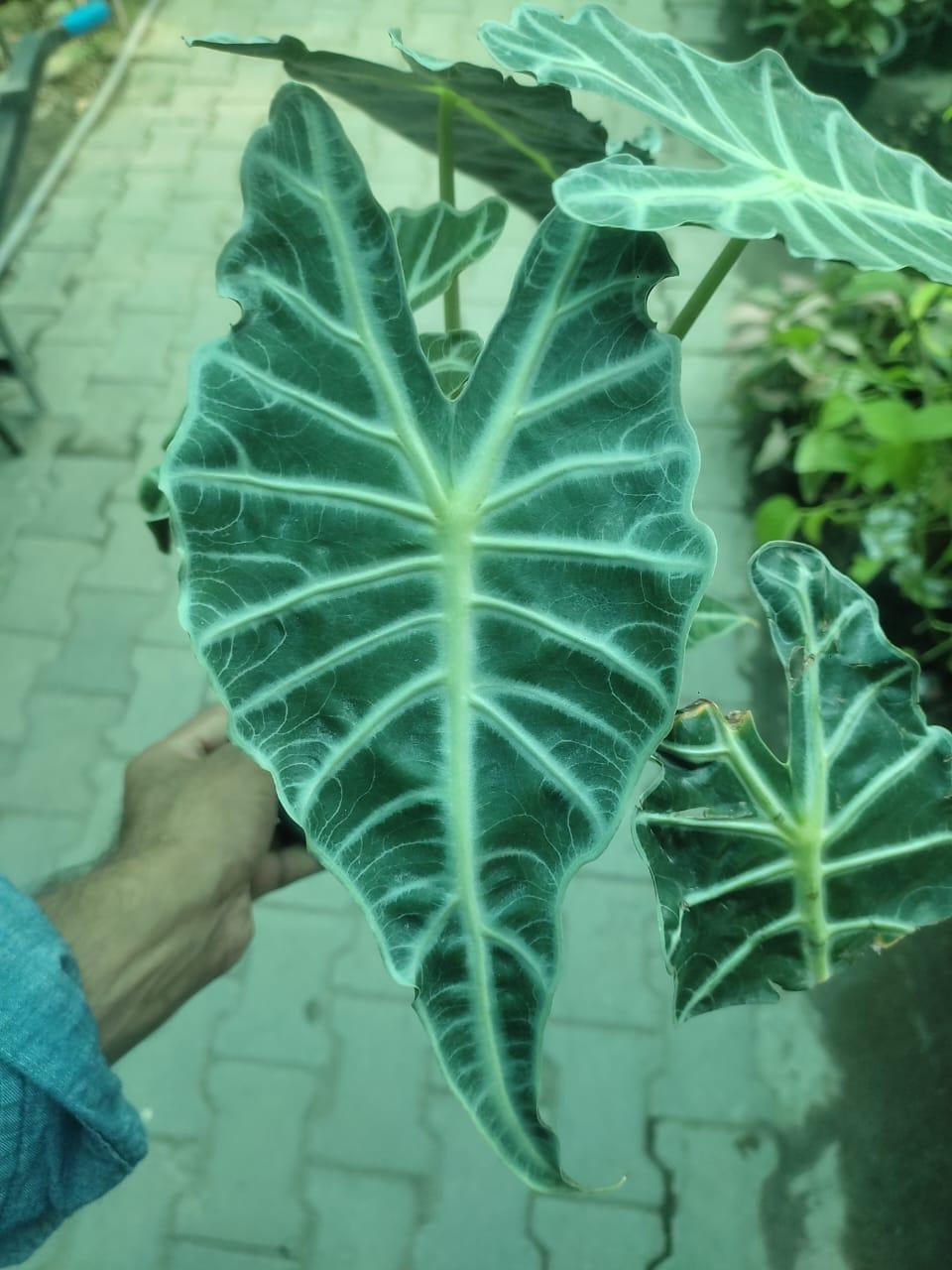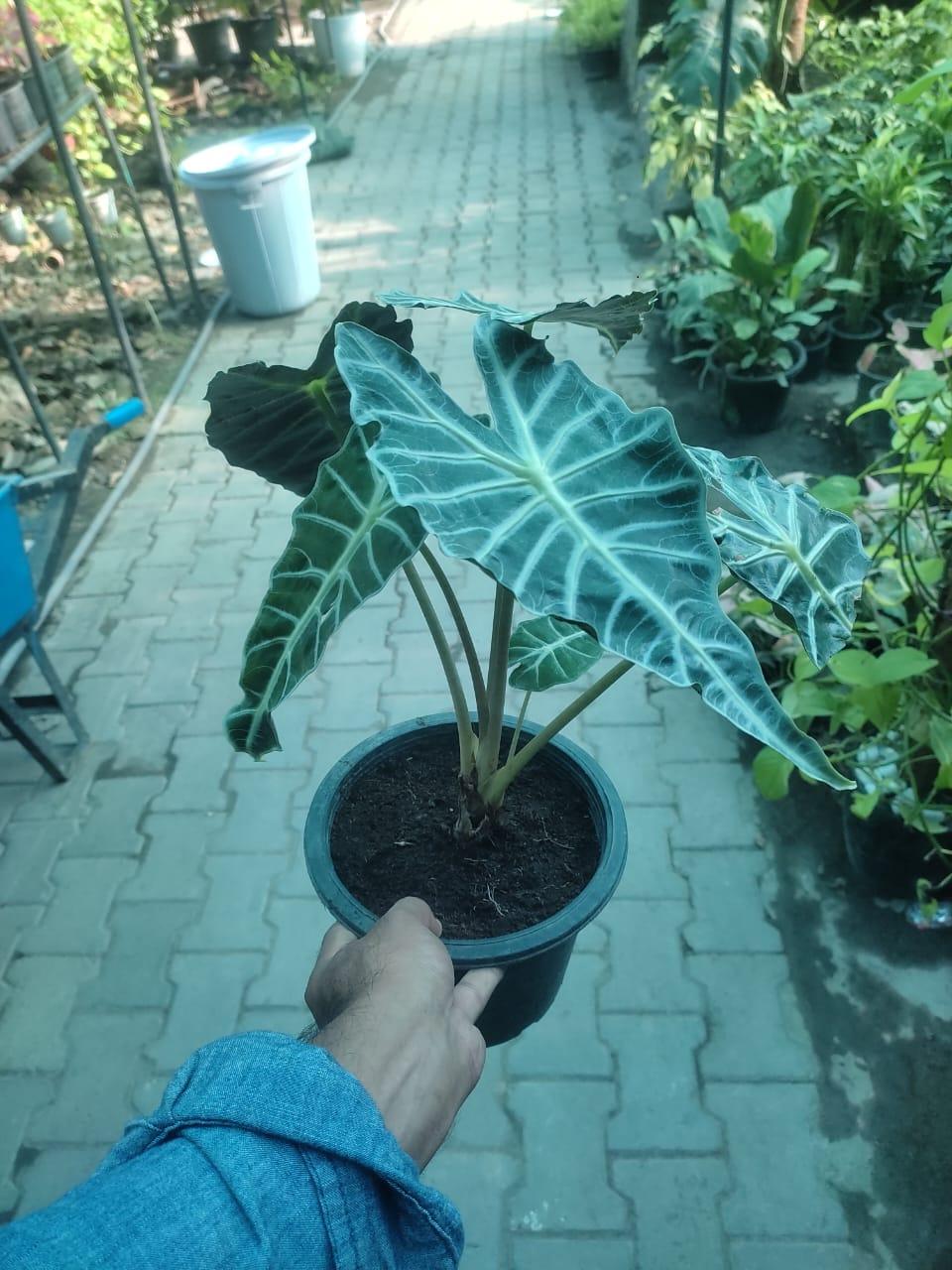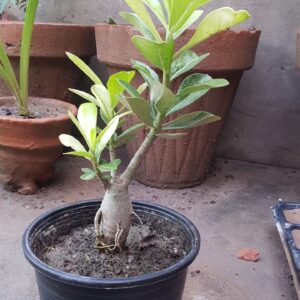Alocasia Amazonica: A Guide to Growing and Caring for This Unique Houseplant
**Alocasia Amazonica**, also known as the Amazonian Elephant Ear or African Mask plant, is a striking houseplant admired for its unique, arrowhead-shaped leaves with deep green coloration and prominent white or silver veins. Native to tropical Southeast Asia, Alocasia Amazonica is not a plant for beginners, but with the right knowledge, it can thrive indoors and add a dramatic tropical flair to any space.
## What Is Alocasia Amazonica?
Alocasia Amazonica is a hybrid species in the Alocasia genus, a group of over 70 species of perennial flowering plants. This specific plant is the result of a cross between *Alocasia sanderiana* and *Alocasia longiloba*. Despite its common name, Alocasia Amazonica is not actually from the Amazon rainforest; rather, it originates from the humid tropical regions of Southeast Asia.
—
## Characteristics of Alocasia Amazonica
Alocasia Amazonica stands out for its:
– **Unique foliage**: Deep, glossy green leaves with distinct silver or white veins.
– **Shape and size**: Arrowhead or shield-shaped leaves that can grow up to 12-18 inches long.
– **Height**: Typically grows up to 2 feet indoors, making it a great medium-sized houseplant.
– **Climate preference**: Thrives in warm, humid conditions similar to its native environment.
This plant is best suited for indoor spaces with high humidity and moderate to bright, indirect light, as it can be sensitive to direct sunlight.
—
## Choosing the Right Pot and Soil for Alocasia Amazonica
### The Ideal Pot for Alocasia Amazonica
To help Alocasia Amazonica thrive, it’s essential to choose the right pot. This plant is susceptible to root rot, so using a pot with good drainage is crucial. Terracotta or ceramic pots are excellent choices, as they allow the soil to dry out more evenly compared to plastic.
Best Soil Mix for Alocasia Amazonica
The soil mix should be well-draining yet capable of retaining some moisture. An ideal mix for Alocasia Amazonica includes:
– 40% potting soil
– 30% orchid bark
– 20% perlite
– 10% charcoal
This blend provides good aeration, drainage, and a moderate level of moisture retention, which is essential for the plant’s tropical roots.
Alocasia Amazonica Care Guide
Light Requirements for Alocasia Amazonica
**Indirect Light**: Alocasia Amazonica requires bright, indirect light to grow. Place it near an east or west-facing window where it can get gentle morning or afternoon sun.
**Avoid Direct Sunlight**: Exposure to harsh direct sunlight can scorch the leaves, causing brown patches. Conversely, too little light will cause the plant to become leggy, with smaller leaves.
### Watering Alocasia Amazonica
Watering is crucial for Alocasia Amazonica, as the plant is sensitive to both over-watering and under-watering. Here’s what you need to know:
– **Frequency**: Water once the top 1-2 inches of soil is dry. This may mean watering once a week in summer and less frequently in winter.
Avoid Over-watering**: Alocasia Amazonica is prone to root rot, so ensure the soil is never soggy.
Humidity**: This plant thrives in high humidity (60-80%). If your home is dry, consider using a humidifier or placing the plant on a tray of pebbles with water.
Temperature Preferences for Alocasia Amazonica
Alocasia Amazonica prefers temperatures between 65°F and 80°F. Keep it away from cold drafts, air conditioners, and heating vents, as sudden temperature fluctuations can stress the plant.
—
## Fertilizing Alocasia Amazonica
During the growing season (spring and summer), fertilize your Alocasia Amazonica every 2-4 weeks with a balanced, water-soluble fertilizer diluted to half strength. This plant does not require fertilizer during fall and winter, as it naturally enters a dormancy period.
—
## Common Pests and Diseases
Alocasia Amazonica is vulnerable to common houseplant pests, including:
– **Spider Mites**: Look for tiny webs on the undersides of leaves. Treat with insecticidal soap or neem oil.
– **Mealybugs**: These appear as white, cottony spots on leaves and stems. Use a cotton swab dipped in alcohol to remove them.
– **Root Rot**: Caused by over-watering. Ensure proper drainage and adjust watering habits to prevent this issue.
Regularly inspect your plant for signs of pests or diseases, and isolate any affected plants to prevent the spread of pests.
—
## Pruning and Repotting Alocasia Amazonica
### Pruning Tips
Alocasia Amazonica doesn’t require frequent pruning, but you should remove yellowing or dead leaves to maintain its appearance and health. Use clean, sharp scissors to avoid introducing bacteria.
### Repotting Alocasia Amazonica
Alocasia Amazonica prefers to be slightly root-bound, so it only needs to be repotted every 1-2 years or when you notice roots growing out of the pot. When repotting, choose a pot that is only 1-2 inches larger than the current one to prevent over-watering.
—
## Alocasia Amazonica Propagation Guide
While it can be challenging, Alocasia Amazonica can be propagated by division:
1. **Timing**: The best time for propagation is during repotting, in spring or early summer.
2. **Method**: Gently separate the plant’s root clumps, ensuring each division has a healthy root system.
3. **Planting**: Place each division in a small pot with a well-draining soil mix and keep it in a warm, humid environment until new growth appears.
Troubleshooting Alocasia Amazonica: Common Issues and Solutions
Why Are Alocasia Amazonica Leaves Turning Yellow?
Yellowing leaves can be due to:
Over-watering**: Check for soggy soil and adjust your watering routine.
Low humidity**: Increase humidity around the plant to prevent leaf yellowing.
Natural Aging**: It’s normal for older leaves to turn yellow as they age.
How to Deal with Brown Tips on Alocasia Amazonica
Brown tips often indicate a lack of humidity or inconsistent watering. Increase humidity around the plant and make sure it’s getting enough water without sitting in soggy soil.
Drooping Leaves: What’s Causing It?
Drooping can result from a lack of light, improper watering, or temperature stress. Move your Alocasia Amazonica to a location with bright, indirect light and check for proper watering.
Alocasia Amazonica: Seasonal Care
As a tropical plant, Alocasia Amazonica naturally goes through a dormant phase during the cooler months. Here’s how to adjust its care by season:
Spring and Summer**: Increase watering frequency and consider using a diluted fertilizer.
Fall and Winter**: Reduce watering, as the plant’s growth slows down in lower temperatures and reduced sunlight. Avoid fertilizing during this time.
## Benefits of Alocasia Amazonica as a Houseplant
Alocasia Amazonica not only brings visual appeal but also provides the following benefits:
– **Air Purification**: Like many houseplants, Alocasia Amazonica can help improve indoor air quality.
– **Aesthetic Appeal**: With its striking leaves, it adds a tropical touch to indoor spaces, making it a focal point in any room.
– **Stress Reduction**: Studies have shown that caring for plants can reduce stress, and the Alocasia Amazonica’s lush, tropical appearance has a calming effect.
Water Alocasia Amazonica once the top 1-2 inches of soil are dry. Adjust the frequency based on the season and indoor conditions.
Can Alocasia Amazonica Grow Outdoors?
In USDA hardiness zones 10-11, Alocasia Amazonica can be grown outdoors in a shaded area. However, it should be brought indoors in colder climates.
### Is Alocasia Amazonica Toxic to Pets?
Yes, Alocasia Amazonica is toxic to both cats and dogs if ingested, so it’s best to keep it out of reach of pets and children.
Final Thoughts
Alocasia Amazonica is a stunning plant that can transform indoor spaces with its dramatic foliage. While it requires some specific care, the unique beauty it brings is well worth the effort. By following the guidelines in this Alocasia Amazonica care guide, you can create the perfect environment for this tropical plant to thrive.
This detailed guide on Alocasia Amazonica covers all essential aspects to help enthusiasts grow and maintain this beautiful houseplant indoors.







Reviews
There are no reviews yet.